July 2007
 View Full Print Edition
View Full Print EditionBusiness Briefs
Columns
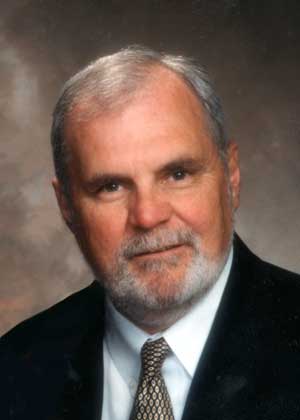
The Way I See It
By Mike Bryan
Key Terms in Ethanol Process Licensing
By Douglas L. Batey
View From The Hill
By Bob Dinneen
EERC Update
By Chris J. Zygarlicke

Editor's Note
By Tom Bryan
NBB In Sight
By Joe Jobe
Featured

A Billion-Ton Forecast
By Bryan Sims
The "Billion Ton" biomass assessment conducted in 2005 was instrumental in accelerating the president's renewable fuels policies and ultimately spurring biomass research efforts, such as the U.S. DOE's "30x'30" initiative. With solid government backing, the report remains an integral reference point for policy-makers and industry leaders to base sound business decisions.
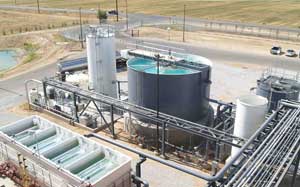
Making Water Work
By Michael Shirek
It may be a dry-grind process, but ethanol production requires water. U.S. Water Services works to ensure the growing industry isn't left high and dry.

Converting Food & Beverage Waste To Fuel
By Bryan Sims
Well before corn became the preferred feedstock for making fuel ethanol, food and beverage manufacturers were producing the renewable fuel from plant waste. EPM talks to industry pioneers about the economics of converting those production left-overs.
Capturing Carbon Opportunities
By Anduin Kirkbride McElroy
It is likely that a cap-and-trade program to regulate carbon emissions will be instituted on a federal level within the United States in the near future. Such a system may make carbon the next big value proposition for the ethanol industry.
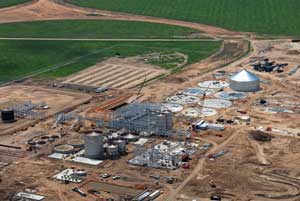
Shrinking Ethanol's Carbon Footprint
By Jerry W. Kram
Using biomass for heat has long intrigued ethanol producers, who like the idea of getting away from using fossil fuels entirely. In response to wildly fluctuating natural gas prices, more producers are considering wood chips, stover, manure and even stillage syrup as economical fuel sources for process heat. Making ethanol even more beneficial to the environment is just the icing on the cake.
Barriers To Building
By Nicholas Zeman
As the EPM staff writers compiled last month's Proposed Ethanol Plant List 2007, it became clear that there was an interesting story behind the plants that didn't make the list—the projects that "weren't going forward" or had been cancelled for various reasons. Here's a look at some of the factors making it harder for start-ups.

Concentrating on Consumption
By Lindsey Irwin
Concerns are mounting that E85 vehicle production and infrastructure growth aren't expanding quickly enough to keep up with the growing U.S. ethanol supply. E10 is already blended in more than half of all U.S. gasoline, which has caused some in the industry to wonder if that we're moving towards an E10 wall, and if E20 could help scale that obstacle.

Power Pairings
By Susanne Retka Schill
Power plants use high-pressure, high-temperature steam to spin the turbines that generate electricity, yet two-thirds of the total energy combusted in the process is wasted. Ethanol plants use steam energy to power evaporators, distillers and dryers. To take advantage of those synergies, some have found it beneficial to collocate ethanol plants and power plants.

Cow Power
By Craig A. Johnson
The cows inhabiting the Mead Cattle Co.'s feedlot earn their keep by supplying a valuable resource besides beef—manure. E3 Biofuels LLC uses what would otherwise be spread on farmers' fields and turns it into a power source for an on-site ethanol plant.

Laying the Groundwork
By Susanne Retka Schill
Supplying feedstocks for a cellulosic ethanol production facility will require long-term commitments from hundreds of growers. As efforts to commercialize the process are refined an outline of a biomass agricultural system is beginning to take shape.
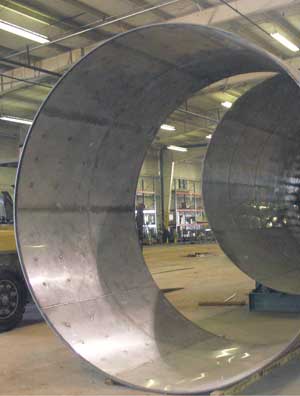
Dryer Innovations
By Ron Kotrba
Dryer manufacturers serving U.S. ethanol producers talk to EPM about changes in their technologies over the years and advances yet to come.

Redefining Emissions
By Jessica Ebert
The U.S. EPA ruling that would allow ethanol plants to emit up to 250 tons per year while staying "minor" emitters may sound like honeyed tones to those wishing to ramp up production but implementation may not be so sweet. Some states will have to initiate a legislative process to amend current laws to reflect the change. In addition, clean air advocates may inspire litigation potentially forcing the ruling to fall flat.
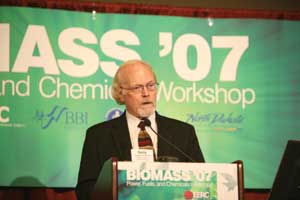
Biomass: Opportunities Abound
By Jerry W. Kram and Bryan Sims
If the presenters at Biomass '07 are any indication, the biomass industry is past taking baby steps and is ready to boldly move toward a bright and prosperous future.
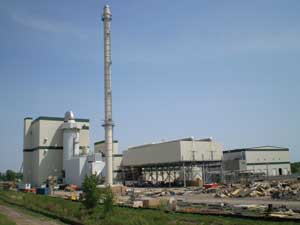
Generating Poultry Power
By Ron Kotrba
Fibrominn LLC recently fired up its 55-megawatt power plant in west central Minnesota and it's one like no other in the United States. Fueled by poultry litter, this plant feeds renewable electricity back to the grid, enhances local economies, and mitigates a few environmental concerns along the way.
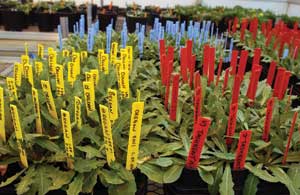
All Natural Mobility
By Lindsey Irwin
More biobased materials are working their way into the automobile industry's new designs as consumers increasingly desire "green" features in their vehicles. Everything from the tires and windshields to the interior carpeting and seat foam are becoming biobased rather than petroleum-based.
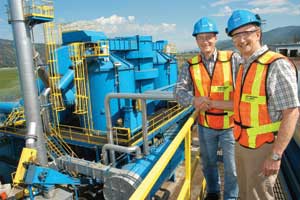
Wood Residue-to-Fuel
By Michael Shirek
The lumber industry has transformed the material that used to be swept off the woodshop floors and discarded, from a byproduct to a coproduct. Biomass Magazine takes a look at how Tolko Industries Ltd. and Nexterra Energy Corp. are turning wood residue from a plywood mill into a fuel to help power the milling process.

A Hard Row to Hoe
By Jerry W. Kram
Despite near-record soybean stocks, biodiesel producers are being pinched by high feedstock prices while diesel fuel remains relatively affordable. Projected demand from the biodiesel industry is sending the cost of raw materials through the roof.
Recycling for Renewables
By Nicholas Zeman
Rendering is not a topic generally discussed around the dinner table or over cocktails, but the industry is an important component of animal processing, recycling billions of pounds of material that would otherwise have no home. It also has a growing role in supplying low-cost feedstocks for renewable fuels.
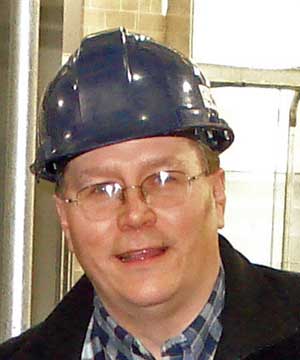
Clearly Biodiesel
By Susanne Retka Schill
Sanimax's double distillation technique reportedly produces a super-clean biodiesel. The feedstock-neutral process allows the company to use everything from soy oil to low-cost animal fat and restaurant grease.

Playing It Safe With Methanol
By Jessica Ebert
As the early wave of small, independent biodiesel producers is eclipsed by a deluge of bigger plants, leaders in the biodiesel industry, insurance companies and other invested parties are working to bring safety concerns-in particular, concerns for the safe handling, transport, and storage of methanol-to the forefront.

Biofuel-Powered by Design
By Lindsey Irwin
Biodiesel is moving into the world of posh consumer sport utility vehicles thanks to diesel engine conversion specialist Jonathan Goodwin. His fuel economy- and horsepower-enhanced vehicles have been featured on MTV's Pimp My Ride, sold on eBay and have now caught the attention of some high-profile figures, including California Gov. Arnold Schwarzenegger.

Controversy Brews Over Blender's Credit
By Ron Kotrba
Refined from low-cost animal fats through thermal depolymerization, renewable diesel is said to possess superior fuel properties and logistical advantages over methyl esters. Large-scale production of renewable diesel will soon be run by Big Oil, its profitability ensured at least for now by a credit originally intended for biodiesel. These issues have producers lobbying hard to keep the blender's credit in the methyl ester realm.
Contributions
It's Something in the Water: Ensuring Profitable and Sustainable Operation
By Mike Mowbray and David Hume
How to Create the Calm Before (and After) the Storm
By John N. Ellison and Pamela D. Hans
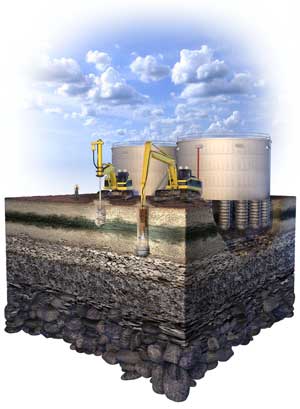
Gaining Ground: The Importance of Efficient and Effective Foundation Support
By Brendan FitzPatrick, P.E.
The Importance of a Flexible Emissions Control System Design
By James L. Nester
Foreign Investment to Spur Growth of Brazil's Ethanol Industry
By Aires Vigo and Andrea Rodella Andrade
The Changing Ethanol Market: Implications for Stakeholders
By Logan Caldwell
Critical Ethanol Valve Applications: Technology to Address Productivity and Safety Concerns
By Eric Fillion, Brian Bombard and Bob Mulcahy














